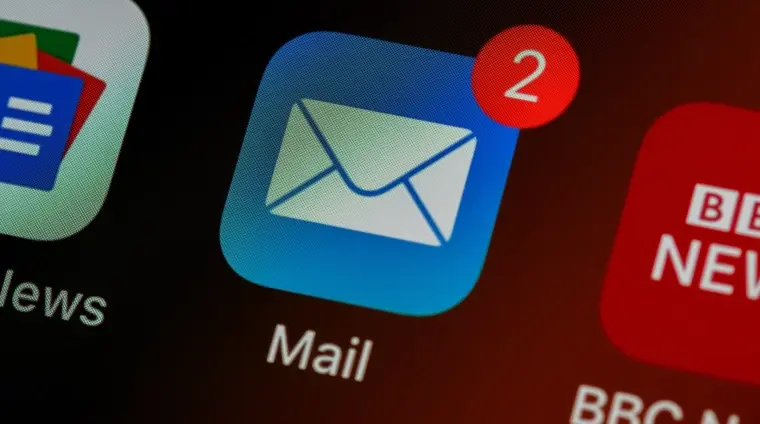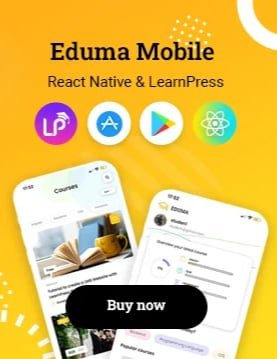Did you know 4.18 billion people globally use the internet on their mobiles? This fact shows why a good digital marketing strategy is crucial. In today’s changing online world, businesses must adapt. If not, they risk being left in the dust.
A strong digital marketing strategy brings many benefits. It can offer your customers personalized experiences and increase their engagement. It also gives you better insights and helps you communicate well with your audience. You achieve this by combining important digital platforms like websites, SEO, and social media into a seamless customer journey.
Creating a digital marketing plan is key to avoid wasting time and effort. It sharpens your focus and helps build on successful strategies. A guide outlines important steps for an effective strategy. This includes setting goals, understanding your audience, planning content, and analyzing data.
Key Takeaways
- A well-crafted digital marketing strategy is essential for businesses to succeed in the modern, constantly evolving online landscape.
- Integrating key digital marketing channels, such as websites, SEO, paid ads, social media, and email marketing, can create a personalized and cohesive customer experience.
- Developing a clear digital marketing plan helps reduce waste, add focus, and build on what is already working.
- Comprehensive guides on creating an effective digital marketing strategy cover goal-setting, audience analysis, content planning, UX design, and data analytics.
- Staying up-to-date with the latest digital marketing trends and best practices is crucial for maintaining a competitive edge.
Understanding Digital Marketing
Digital marketing is all about using online ways to make your mark and meet goals. This mode offers tons of benefits like connecting with the right people, making each customer feel special, and using data to better your efforts. It’s also great for talking more clearly with your customers.
Definition and Benefits
Digital marketing definition is quite simple – it’s using tech to promote what you offer. This field has grown a lot since the 1990s when everyone started using the internet. Now, the digital marketing benefits are endless. You can aim your marketing just where it’ll hit home, see how well you’re doing, and really connect with your audience.
Key Digital Marketing Trends
To keep up with the competition, businesses have to know what’s hot in digital marketing trends. Things like making your website mobile-friendly, using more videos, and employing AI are big. Understanding and using these trends help companies craft strategies that work.
| Trend | Description |
|---|---|
| Mobile Optimization | It’s getting more vital to have a smooth, mobile-ready site for users on the go. |
| Video Content | Video has become a top choice for sharing content, letting businesses grab their audience’s attention in fun ways. |
| AI and Machine Learning | AI and machine learning are being used more. They help automate tasks, make content personal, and boost digital marketing’s effectiveness. |
| Data-Driven Insights | There’s a big push towards using data for smarter decision-making, better campaigns, and delivering more personal content to customers. |
To excel, businesses need to keep up with the latest digital marketing trends. This ensures they’re ready for the ever-changing digital world and can create winning marketing plans.
Defining Your Digital Marketing Goals
Effective digital marketing starts with clear goals. Without knowing your digital marketing goals, your business might drift, focusing on numbers that don’t help the big picture. However, when you set clear, achievable goals, it guides your team towards success.
Identifying Business Objectives
Start by connecting your digital marketing goals to your main business objectives. Think about what you most want for your business like more sales, better brand recognition, or increased leads. Then, turn these into digital marketing goals to boost your business’s growth and success.
Setting SMART Goals
Understanding your business objectives is key before setting SMART goals for digital marketing. SMART means your goals are Specific, Measurable, Achievable, Relevant, and have a Time limit. This approach ensures your goals are clear, trackable, and tied to real outcomes. It also crafts a roadmap that links your digital tactics to your success.
| Objective | SMART Goal | Timeframe | Metric |
|---|---|---|---|
| Increase online sales | Achieve a 20% increase in online sales | Within 1 year | Online revenue |
| Improve mobile conversion rate | Increase mobile conversion rate by 15% | Within 3 months | Mobile conversion rate |
| Reduce cart abandonment | Decrease cart abandonment rate by 20% | Within 3 months | Cart abandonment rate |
Setting SMART goals in line with business objectives helps create a focused path. It pushes your team towards specific, reachable goals, crucial for your business’s growth and success.
Target Audience Analysis
Starting a successful digital marketing strategy means really knowing your audience. This involves finding out their age, interests, habits, and what they need. With this info, companies can make their products and messages fit what their audience wants.
Creating Buyer Personas
To make the audience real, businesses can make detailed buyer personas. These are models based on the data you collect. They help marketers truly understand their customers. This leads to better content and campaigns. By using buyer personas, companies focus on what works best for their ideal clients.
Understanding Customer Behavior
Knowing more than just people’s age or where they live is vital. It’s key to understand what customers like and what troubles them. With a deep understanding of their behavior, companies can make digital campaigns that feel more personal. They complete the path from noticing a brand to buying from it. They can predict lifestyle changes and know what makes people buy.
| Metric | Value |
|---|---|
| McKinsey Cost Reduction | 20-40% |
| Marketer Automation ROI | $5.44 per dollar spent |
| Revenue and Retention Increase | Up to 30% |
| Customer Satisfaction Increase | 20% |
| Conversion Rate Increase | 10-15% |
| Repeat Customers | 45% |
| Marketers Engaging Right Content | 61% |
| Consumers Needing Deeper Understanding | 56% |
| Consumers Receiving Irrelevant Content | 51% |
By really digging into who your audience is, you get powerful insights. These insights help build marketing that truly connects. The result is more sales, loyal customers, and standing out from the competition.
Developing a Content Strategy
An effective digital marketing strategy needs a strong content strategy. This means businesses should create, distribute, and optimize content. It ensures they connect with their audience by offering interesting and valuable information. This way, businesses can raise brand awareness, draw in more visitors, and boost their sales through quality leads.
Content Types and Formats
A successful content strategy uses many types and formats to meet audience needs. Examples are blog posts, social media updates, and videos. Businesses mix these up to reach and engage more people where they are. Variety helps connect with audiences in the way they like best.
Content Creation and Curation
Creating unique and engaging content is key for catching the audience’s eye and showing expert knowledge. This involves research, brainstorming, and using SEO to make content stand out. Finding and sharing other high-quality content (content curation) can also help. It adds more value for the audience.
Content Distribution and Promotion
To be seen, businesses need smart content distribution and promotion plans. This can mean sharing on social media, in emails, or even using ads. By choosing the right ways to distribute and promote, businesses make sure their content hits home with their audience.
| Content Marketing Statistics | Value |
|---|---|
| Percentage of marketers actively investing in content marketing | 70% |
| Increase in traffic and conversions after implementing a content strategy plan | 70% |
| Percentage of successful B2B marketers with a documented content strategy | 60% |
| Percentage of B2B marketers with a documented content marketing strategy | 43% |
A well-thought-out content strategy improves how businesses reach, engage, and drive traffic. It also helps meet their digital marketing goals effectively.
Digital Marketing Strategy
Creating a good digital marketing strategy is key for any business today. Almost half of all businesses don’t have one, which could hurt how they compete.
A smart digital marketing plan is like a map for your online actions. It helps you stand out, adjust to what customers want, and keep up with new tech. Success comes from mixing big-picture planning with step-by-step actions that can be measured.
Think of a digital marketing strategy as like a North Star for your online efforts. It brings all your actions together, from SEO to PPC, in a way that helps you reach your goals.
Top companies put a lot of effort into their digital strategy. They focus on clear goals, right tools, and stick to what works for their business. This is even more important as more people use phones for shopping.
Website Optimization
In today’s world, your website is key to success online. A good website offers a great user experience (UX). It loads fast, works well on mobile, and makes a strong first impression. These things are vital for your online presence.
Mobile-Friendly Design
Over half of internet users use mobile devices. So, your website must be easy to use on phones and tablets. This means the layout, how you get around the site, and what you see must work well on mobiles. Such an approach helps keep your visitors happy and boosts your site’s website optimization.
Site Speed and Performance
How fast your website loads really matters. You should aim for it to open in 3 seconds or less. Slow sites make people leave quickly, hurting your goals. Use Google’s PageSpeed Insights to improve. This tool can suggest things like making images smaller, and using browser caching.
User Experience (UX) Design
Creating a website where people enjoy spending time is what makes good user experience (UX). It’s about easy navigation, clear forms, and fast loading. These choices help users find what they need and do what they want on your site. This leads to more people staying on your site and taking action, which is what you want. It also leaves a good memory of your site with visitors.
Search Engine Optimization (SEO)
In the digital world, search engine optimization (SEO) is key for growing website visits and search visibility. It involves using smart SEO strategies to attract more visitors naturally. This improves your brand’s visibility, helping boost sales.
Keyword Research and Targeting
A strong SEO plan starts with digging deep into keyword research to know what your audience wants. You find and use the best keywords to help your website show up first on search results. This brings more people to your site.
On-Page SEO Tactics
On-page SEO is about tweaking your website itself. It involves making sure your page titles and content are easy for people and search engines to understand. Using the right keywords in your pages can also lift your website in search rankings.
Off-Page SEO Tactics
Off-page SEO works on the connections your website has with others. It focuses on getting links from respected sites. These backlinks tell search engines your site is reliable. This can push your website higher in search results.
By using smart keyword research, working on on-page SEO, and building good links, companies can make the most of search engine optimization. This can bring more organic traffic, build brand trust, and meet their online marketing targets.
Social Media Marketing
Social media has turned into a powerful marketing tool. It helps companies reach their audience, increase brand awareness, and engage everyone. This type of marketing uses platforms like Facebook, Twitter, and Instagram to meet its goals.
Choosing the Right Platforms
To do social media marketing well, pick the best platforms. Think about who your audience is and what you want to achieve. Each platform is different, with its own users and ways of sharing content. So, do some research to find the best ones for you.
Creating a Social Media Content Plan
Having a solid content plan is key to doing well on social media. Make different kinds of content, like photos, videos, and posts, that match what your brand is about. Also, set a schedule for when to post things. This keeps your audience interested and can help you grow.
Social Media Advertising
Along with posting organic content, you can also advertise on social media. This helps you reach more people and drive actions like visiting your website or making a purchase. Sites such as Facebook and Instagram let you target specific groups and see how your ads are doing.
With a good social media marketing plan, businesses can make their brand stronger and get people more involved. This can lead to growth for the business.
Email Marketing
Email marketing is a powerful tool in the digital world. It allows businesses to reach out to customers through emails. Today, over 361 billion emails are sent. This number is expected to grow to 376 billion by 2025.
Building an Email List
Building a strong email list is key to success. You can do this by offering lead magnets, having website sign-up options, and integrating with social media. This helps you connect with potential customers who are interested in what you offer.
Email Campaign Strategies
To create effective email campaigns, a strategic plan is needed. This includes interesting content, personalizing emails, and using data to improve. With A/B testing and segmenting your audience, you can send messages that appeal to them. This increases the chances they will read your emails and take action.
Email Automation and Personalization
Email automation and personalization are powerful. They allow you to send individualized messages through triggered campaigns. This approach boosts open rates and increases revenue by 760%. Such personalization not only improves the customer experience but also builds stronger loyalty to your brand.
| Metric | Value |
|---|---|
| Daily Email Volume (2020) | 306.4 billion |
| Daily Email Volume (Projected 2025) | 376.4 billion |
| Average Email Marketing ROI | $36 per $1 spent |
| Average Open Rate for Branded Emails | 21.33% |
| Average Time Spent Reading Branded Emails (2021) | 10 seconds |
Using email marketing well improves your digital marketing strategy. It increases customer engagement, revenue, and builds stronger relationships with your audience.

Paid Advertising
Paid advertising is a key strategy in the digital marketing world. It helps businesses increase their visibility, website traffic, and customer engagement fast. In 2023, over 41.8% of the money spent on digital ads went to paid ads. This shows its importance today.
Pay-Per-Click (PPC) Advertising
Pay-per-click (PPC) advertising is very common. Advertisers pay each time someone clicks their ad. These ads appear at the top of Google’s search results. They are a great way to get the right people to visit your website and potentially make a purchase.
A good PPC strategy uses smart tactics. This includes choosing the right keywords, writing ads that stand out, and adding extra information to your ads.
Display Advertising
Display advertising uses various layouts like pop-ups, banners, and videos. Its main job is to make people more aware of a brand. These eye-catching ads show up on other websites. This helps businesses get noticed by their ideal customers.
Remarketing and Retargeting
Remarketing and retargeting are great for reaching people who’ve already shown interest. Targeted ads remind these visitors about your products or services. This often leads to more sales and customer loyalty.
| Paid Advertising Type | Key Features | Benefits |
|---|---|---|
| Pay-Per-Click (PPC) Advertising | – Appears at the top and bottom of search engine results pages – No visuals, payment based on views or clicks |
– Effective way to drive targeted traffic and generate leads – Ability to optimize performance through negative keywords, ad copy, and extensions |
| Display Advertising | – Contains images, videos, and text – Shown on partner websites |
– Helps build brand awareness through visually engaging ads – Reach target audience on popular websites |
| Remarketing and Retargeting | – Targets past website visitors who did not convert – Aims to re-engage them with previous products or services |
– Drives conversions by re-engaging with interested users – Fosters long-term customer loyalty |
Planned well, paid ads can help businesses grow their customer base and sales quickly. They let you connect with new people, make your brand known, and increase sales. Tools like Google Ads and social media platforms are key. They help you spend your ad budget wisely and track what’s working best.
Analytics and Measurement
In digital marketing, understanding your strategies’ success is key. You do this with clear key performance indicators (KPIs) and benchmarks. These help you see how your marketing work is doing. Then, you can choose the best path to make improvements.
Key Performance Indicators (KPIs)
For every digital marketing task, choose KPIs that fit your business goals. These can be things like website visits, conversion rate, and more. Watching these numbers closely helps you know if your marketing is working. It guides you to better choices for your next steps.
Data Analysis and Reporting
After setting your KPIs, it’s time to look closely at the data. Use tools like Google Analytics and social media insights. They can tell you a lot about what users do. This information is valuable. It helps you see what’s working and what needs improvement. With smart analysis, you can choose actions that help your business grow.
Testing and Optimization
Digital marketing changes fast. To keep up, always test and improve. Try new things and fine-tune your efforts. This way, you’re ready for any changes in the online world. And you can get the most out of your marketing analyses.
Digital Marketing Strategy
We’ve covered the important parts of a great digital marketing plan. It’s key to have a clear plan from the start. Doing this helps businesses know where they’re going.
It also lets them stay ahead of the competition. And they can adjust to changes in the digital world as they happen.
Being successful in digital marketing means carefully planning and then executing those plans well. Top companies mix big goals with practical steps they can measure. When digital marketing matches what a business aims to achieve, it has a bigger effect. This leads to growth that lasts over time.
Having a strong online marketing plan is vital for a business’s success. It ties everything together. A good strategy helps companies connect better with their audience. They do this across many channels online. This is how they make the most of the digital world we live in.

| Key Digital Marketing Metrics | Benchmark Performance |
|---|---|
| Website Traffic | 10% annual growth |
| Email Open Rate | 25-30% industry average |
| Social Media Engagement | 2-3% engagement rate |
| Conversion Rate | 3-5% ecommerce average |
| Return on Ad Spend (ROAS) | 4:1 ratio for paid ads |
Conclusion
A well-planned digital marketing strategy is key for today’s businesses to succeed. It doesn’t matter how big they are or what they do. When companies set clear goals and understand their audience, they boost their brand’s visibility and grab more market share.
Using digital marketing tools, like SEO and social media, helps businesses grow. They can talk to more people in a personal way. This approach is affordable and flexible, giving small businesses a chance to shine online.
To be successful, companies need to think and act smart in their digital marketing. They should match their efforts to their main business goals. By keeping up with new trends and tools, they can stay ahead and keep growing in the digital age.
FAQ
What is a digital marketing strategy?
Why is it important to have a digital marketing strategy?
What are the key components of a digital marketing strategy?
How do you set effective digital marketing goals?
Why is target audience analysis important for a digital marketing strategy?
What are the key components of a content strategy?
Why is website optimization important for a digital marketing strategy?
How can search engine optimization (SEO) enhance a digital marketing strategy?
What role does social media marketing play in a digital marketing strategy?
How can email marketing contribute to a digital marketing strategy?
What is the role of paid advertising in a digital marketing strategy?
How do analytics and measurement support a digital marketing strategy?
Source Links
- https://www2.deloitte.com/mt/en/pages/strategy-operations/articles/mt-creating-a-successful-digital-marketing-strategy.html
- https://blog.hubspot.com/marketing/digital-strategy-guide
- https://www.investopedia.com/terms/d/digital-marketing.asp
- https://www.ama.org/marketing-news/what-is-a-digital-marketing-strategy/
- https://digitalskills.loyno.edu/article/your-guide-to-understanding-how-digital-marketing-works/
- https://www.smartinsights.com/digital-marketing-strategy/how-to-set-digital-marketing-objectives/
- https://kwsmdigital.com/blog/how-to-identify-the-goals-of-a-digital-marketing-strategy/
- https://deepsync.com/target-audience-analysis/
- https://emplifi.io/resources/blog/target-audience-analysis-guide-everything-digital-marketers-need-to-know
- https://www.coursera.org/articles/content-strategy
- https://blog.hubspot.com/marketing/content-marketing-plan
- https://www.contentful.com/blog/how-to-build-a-digital-content-strategy/
- https://www.smartinsights.com/digital-marketing-strategy/
- https://www.optimizely.com/optimization-glossary/website-optimization/
- https://www.ama.org/marketing-news/why-website-optimization-is-crucial-in-the-digital-era/
- https://vwo.com/website-optimization/
- https://moz.com/learn/seo/role-of-seo-in-digital-marketing
- https://searchengineland.com/guide/what-is-seo
- https://blog.hubspot.com/marketing/seo-strategy
- https://online.wvu.edu/blog/communications/digital-marketing-vs-social-media-marketing
- https://blog.hootsuite.com/how-to-create-a-social-media-marketing-plan/
- https://www.simplilearn.com/digital-marketing-vs-social-media-marketing-article
- https://www.superoffice.com/blog/email-marketing-strategy/
- https://www.coursera.org/articles/email-marketing
- https://www.oviond.com/the-importance-of-paid-advertising-in-digital-marketing/
- https://blog.hubspot.com/marketing/earned-owned-paid-media-lead-generation
- https://www.mayple.com/blog/paid-advertising-strategy
- https://careerfoundry.com/en/blog/digital-marketing/digital-marketing-analytics/
- https://www.linkedin.com/pulse/analytics-performance-measurement-digital-marketing-what-you-dndpe
- https://ithinkbigger.com/analytics-used-to-measure-effectiveness-of-digital-marketing-campaigns/
- https://www.sunmediamarketing.com/digital-marketing/conclusion-of-digital-marketing/
- https://www.linkedin.com/pulse/importance-digital-marketing-strategy-small-businesses-shahed-ali















